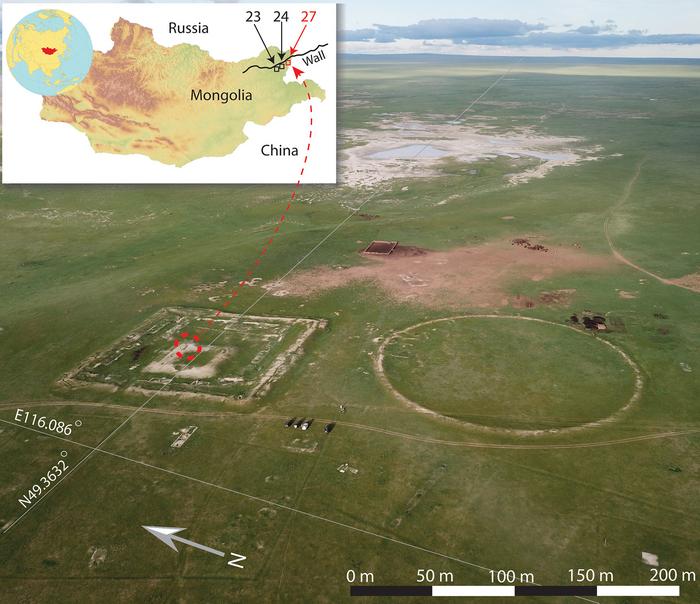A team of archaeologists led by Professors Gideon Shelach-Lavi from the Hebrew University of Jerusalem, Amartuvshin Chunaga from the National University of Mongolia and William Honeychurch from Yale University, has unearthed an elite grave dating back to the pre-Mongol period in Dornod Province, Mongolia. This finding, part of the Mongol-Israeli-American Archaeological Project, sheds new light on a poorly understood era on the Mongolian plateau, spanning the collapse of the Kitan Empire around 1125 CE to the rise of the Mongol Empire under Chinggis Khan in 1206 CE.

Credit: Dan Golan
A team of archaeologists led by Professors Gideon Shelach-Lavi from the Hebrew University of Jerusalem, Amartuvshin Chunaga from the National University of Mongolia and William Honeychurch from Yale University, has unearthed an elite grave dating back to the pre-Mongol period in Dornod Province, Mongolia. This finding, part of the Mongol-Israeli-American Archaeological Project, sheds new light on a poorly understood era on the Mongolian plateau, spanning the collapse of the Kitan Empire around 1125 CE to the rise of the Mongol Empire under Chinggis Khan in 1206 CE.
The Khar Nuur burial, as it is now known, was found within the enclosure wall of a Kitan-era frontier fortress. The grave, which likely postdates the use of the fortress, contains the remains of an older woman, suggesting she belonged to a prestigious lineage with significant political standing. This discovery provides crucial insights into the local communities, their networks, and their organization during the 12th century CE—a period marked by post-imperial destabilization and intense political competition.
Archaeological Context and Significance
The Mongol-Israeli-American Archaeological Project has been conducting surveys and excavations along Kitan frontier ‘long-walls’ in northeastern Mongolia since 2018. The discovery of the Khar Nuur burial is one of the most significant findings of the project, offering valuable evidence of the cultural and political shifts that occurred in the lead-up to the rise of the Mongol Empire.
Several hypotheses have been proposed to explain the choice of burial location:
1. The Khar Nuur steppe nomads may have perceived the abandoned Kitan fortress as part of their own history and indigenous territory, using it to affirm local identity and social memory.
2. The fortress may have held symbolic prestige, making it a fitting site for the burial of a leading community member.
3. The burial could have been a deliberate display of power and territorial possession amid the political competition of the time.
These theories, while not mutually exclusive, offer a combined explanation for the social and political processes taking place on the eastern steppe during the post-Kitan period. As imperial authority waned and steppe groups vied for control, the Khar Nuur burial stands as a poignant symbol of identity, memory, and power in a time of transition.
Historical Implications
The discovery adds a vital piece to the puzzle of Mongolian history, providing a deeper understanding of the events and communities that shaped the region before the rise of the Mongol Empire. It offers valuable insights into how local communities maintained their networks and organization during a period of significant change and political competition.
“The Khar Nuur burial represents a unique window into the complex social and political landscape of 12th century Mongolia,” added Prof. Shelach-Lavi. “It demonstrates how local elites may have used symbolic connections to past empires to legitimize their own power and status, even as they navigated a rapidly changing political environment.”
This remarkable find not only enriches our understanding of pre-Mongol Empire Mongolia but also highlights the importance of continued archaeological research in uncovering the nuanced history of the region. As further analysis of the burial and its contents continues, researchers anticipate gaining even more insights into this pivotal period in Mongolian and world history.
Journal
Archaeological Research in Asia
Method of Research
Case study
Subject of Research
Not applicable
Article Title
An elite grave of the pre-Mongol period, from Dornod Province, Mongolia
Article Publication Date
1-Sep-2024



